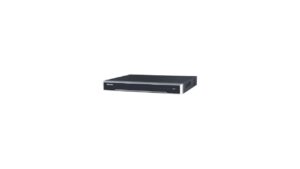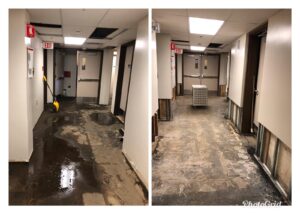The Impact of Global Supply Chain Disruptions on Industrial Component Sourcing for OEMs
In recent years, global supply chain disruptions have significantly impacted industries worldwide, and industrial component sourcing for OEMs has been no exception. What was once a streamlined and predictable procurement process has now been affected by delays, material shortages, and rising costs. As a result, OEMs have had to rethink their sourcing strategies to maintain production efficiency and meet market demands. Below, we explore the key ways these disruptions have influenced industrial component sourcing and how OEMs are adapting.
1. The Domino Effect of Supply Chain Disruptions on Component Sourcing
Industrial component sourcing relies on a network of global suppliers providing essential parts for manufacturing. However, this interconnected system has proven vulnerable to disruptions at any point in the supply chain. The COVID-19 pandemic, geopolitical tensions, and logistical bottlenecks have caused factory shutdowns, port closures, and delays in raw material shipments, significantly affecting the availability of critical components.
For OEMs, delays in sourcing essential components can lead to stalled production, missed delivery deadlines, and increased operational costs. Without timely access to high-quality components, manufacturers struggle to meet customer demands, impacting overall business performance.
2. Rising Costs and Pricing Volatility
Global supply chain disruptions have led to extreme price volatility, particularly in the cost of raw materials such as steel, aluminum, and electronic components. As material shortages persist and transportation costs fluctuate due to container shortages and fuel price hikes, OEMs are facing higher sourcing costs.
For companies dependent on industrial components, these rising expenses translate to narrower profit margins. If a component’s cost doubles due to supply chain constraints, OEMs must either absorb the cost or pass it along to customers—neither of which is an ideal solution. Effective cost management and strategic sourcing partnerships have become essential to mitigating these financial risks.
3. Longer Lead Times and Production Delays
Before recent supply chain challenges, many manufacturers operated under a Just-in-Time (JIT) inventory model to minimize storage costs and increase efficiency. However, as global disruptions caused lead times to extend from weeks to months, OEMs relying on JIT found themselves vulnerable to unexpected delays.
For industrial component sourcing, where precision engineering and custom specifications are often required, prolonged lead times present significant operational challenges. OEMs that once depended on short turnaround times now face unpredictability in deliveries, forcing them to adjust their production schedules accordingly.
4. The Shift Toward Diversified and Local Sourcing
To mitigate supply chain instability, many OEMs have begun diversifying their supplier base rather than relying on a single region or vendor. Establishing relationships with multiple sourcing partners helps reduce dependency on any one supplier, ensuring a more resilient supply chain.
Additionally, there has been a noticeable push toward nearshoring and reshoring—sourcing components from domestic or nearby suppliers instead of relying on overseas manufacturers. While local sourcing may come with higher upfront costs, it offers advantages such as reduced lead times, lower transportation expenses, and improved supply chain visibility. For OEMs, this shift provides greater control and flexibility, helping to prevent production disruptions.
5. Leveraging Technology and Automation for Supply Chain Resilience
Advanced technology is playing a crucial role in helping OEMs navigate sourcing challenges. Digital tools powered by artificial intelligence (AI) and big data analytics are improving supply chain visibility, enabling manufacturers to predict potential disruptions and adjust sourcing strategies proactively.
Predictive analytics can help OEMs forecast lead times, monitor supplier performance, and optimize inventory levels. Additionally, automation in inventory management ensures that component stock levels are adjusted based on demand fluctuations, preventing shortages or overstocking.
Blockchain technology is also emerging as a valuable tool for industrial component sourcing, offering transparent and traceable supply chains. With enhanced traceability, OEMs can track component origins, ensure compliance, and quickly identify alternative sourcing options when disruptions occur.
6. Strategic Inventory Management Adjustments
In response to ongoing supply chain uncertainties, many OEMs have moved away from strict JIT models and adopted hybrid inventory strategies. This includes maintaining buffer stock of critical components to reduce the risk of production stoppages.
OEMs are also strengthening relationships with key suppliers to secure priority access to essential components. Long-term sourcing agreements and collaborative planning with suppliers help stabilize component availability and pricing, ensuring greater reliability in the supply chain.
Conclusion: Adapting to the New Landscape of Industrial Component Sourcing
The global supply chain crisis has reshaped industrial component sourcing company for OEMs, necessitating a shift toward more resilient and flexible strategies. Rising costs, extended lead times, and pricing volatility have challenged traditional sourcing models, prompting companies to diversify suppliers, explore local sourcing, and invest in advanced technology.
OEMs that prioritize supply chain resilience, leverage digital tools, and cultivate strong supplier partnerships will be best positioned to navigate future disruptions. By adapting to these evolving challenges, manufacturers can ensure a steady flow of high-quality components, maintain production efficiency, and secure long-term business success.













